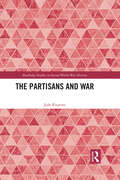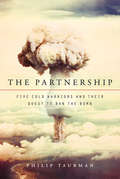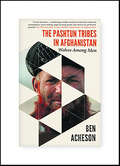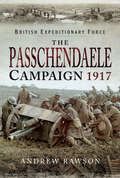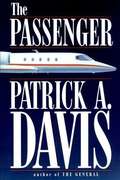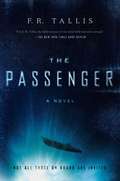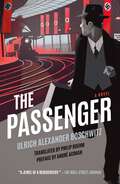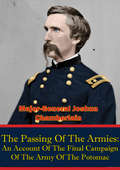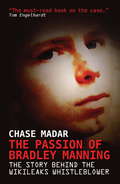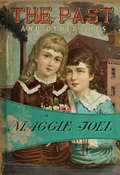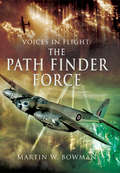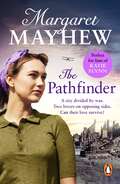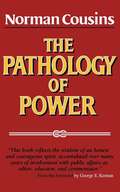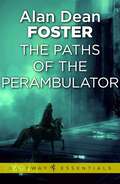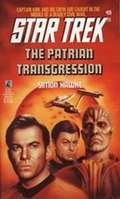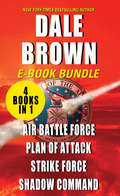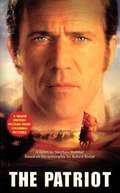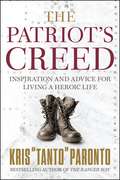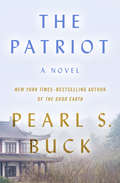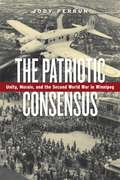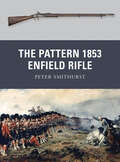- Table View
- List View
The Partisans and War (Routledge Studies in Second World War History)
by Jože PirjevecThis book explores the rise of two resistance movements in Yugoslavia after its invasion and partition by Germany, Italy, Hungary, and Bulgaria in April 1941: one led by Draža Mihailović's Chetniks, supporters of the Serb monarchy; and the Partisans, led by Josip Broz Tito and his Communist Party.Based on research by the author in Yugoslav, German, British, American, Italian, and Russian archives and libraries, including the unpublished war memoirs of Josip Broz Tito, the book traces the causes of the April War, the ensuing uprising in Western Serbia against the occupiers, and its aftermath. Tensions were inevitable between the Chetniks, who sought the restoration of the old regime, and the Partisans, who wanted not only the liberation of the country but also social revolution. Pirjevec situates the Partisan struggle within the framework of Central Europe, the Balkans, and the Mediterranean, dominated by the Axis powers and the Anglo-American and Soviet Allies, who would all take strategic interest in the struggle by 1943 as a link between the Eastern and the Western Fronts, and for longer-term control of the Balkans.This volume will appeal to readers interested in the lesser-known chapters of the Second World War and the history of Yugoslavia.
The Partnership: Five Cold Warriors and Their Quest to Ban the Bomb
by Philip TaubmanOffering a clear analysis of the danger of nuclear terrorism and how it can be prevented, The Partnership sheds light on one of the most divisive security issues facing Washington today. Award-winning New York Times journalist Philip Taubman illuminates our vulnerability in the face of this pressing terrorist threat—and the unlikely efforts of five key Cold War players to eliminate the nuclear arsenal they helped create. Bob Woodward calls The Partnership a “brilliant, penetrating study of nuclear threats, present and past,” and David Kennedy writes that it is “indispensable reading for all who would understand the desperate urgency of containing the menace of nuclear proliferation.”
The Pashtun Tribes in Afghanistan: Wolves Among Men
by Ben Acheson‘The Pashtun Tribes of Afghanistan is a tour de force – combining erudite analysis, historical research, atmospheric story-telling, page-turning prose and above all, profound passion.’ - Sir Nicholas Kay, NATO Senior Civilian Representative in Afghanistan (2019-2020) & British Ambassador to Afghanistan (2017-2019) The abrupt withdrawal of US and NATO forces in 2021 ushered in a new era for Afghanistan. The subsequent Taliban takeover facilitated a reversion to some of the worst hallmarks of Afghanistan’s past, including bans on women’s education and other rights-related roll-backs. Navigating this new reality necessitates that more constructive relationships are built between Westerners and Afghans, particularly with the majority ethnicity – the Pashtun tribes. The Pashtun Tribes in Afghanistan: Wolves Among Men is the toolkit for doing so. It provides the knowledge needed to navigate a complex tribal environment. Framed by first-hand experience and balancing in-depth analysis with engaging anecdotes, it sheds light on the Pashtun way of life still enshrined in the ancient “Pashtunwali” honor code. It explains the tribal structure, tribal territories, historic battles, prominent figures and even Pashtun proverbs and poets. It also highlights how recent wars are destroying the tribal arena. Focusing on people rather than politics, this book unveils the layers, paradoxes and subtleties of the world’s largest tribal society. On turning the final page, readers will understand the Pashtun brand of tribalism and how it influences Afghanistan today. They will be aware that tribal life has been permanently challenged but that the Pashtun identity remains intact – in psychology if not always in practice. They will recognize why Pashtuns are not a single entity and should not be treated as “one”. The need to understand the tribes as they understand themselves will also be clear, particularly their concept of honor. This book illuminates why, from Alexander the Great to Winston Churchill, and even with the Taliban today, Pashtuns are still stereotyped as primitive, violence-prone barbarians. But were men like Rudyard Kipling right to characterize tribesmen as being “as unaccountable as the grey Wolf, who is his blood brother?” This book has the answer.
The Passage (A Dan Lenson Novel #4)
by David PoyerIn The Passage, Poyer offers the fourth book in his ambitious cycle of the U.S Navy-a powerful human drama of hope, betrayal, redemption, and thrilling action at sea and ashore. The Passage begins with a mystery: a U.S. attack sub is lost on a secret mission off the Siberian coast. As the Navy investigates, fearing that somehow its codes are being read, Lieutenant Dan Lenson begins a crucial assignment. Ordered to straighten out the radically innovative but failure-prone combat system of USS Barrett, DDG-998, Lenson is at a personal crossroads. His wife has left him, his previous tour of duty ended in tragedy, and he is beginning to doubt his own sense of right and wrong. Barrett is on her way to a demanding workup in Guantanamo Bay, Cuba. If she fails, his career will be over. As Dan starts his voyage, newly widowed Graciela Gutierrez begins her own. A pregnant sugar-cane worker, she dreams of raising her fourth child in freedom. With eight others in a remote village in Camaguey Province, she plans a daring escape from Cuba in a homemade boat. If they succeed, a new life awaits in America; if they fail, they will die in the shark-filled waters of the Windward Passage. Struggling to crack an electronic virus, Lenson and computer expert "Doctor DOS" Shrobo gradually uncover more problems aboard Barrett. Captain Thomas Leighty may be losing control of his ship. There are whispers about his sexual orientation and the executive officer's loyalty. As a massive refugee boatlift begins, another danger is unmasked: somewhere aboard is a ruthless and cunning spy, with a plan that will lure the Navy, Barrett, and Lenson into a frightening international confrontation. Suspenseful, profound, and richly peopled, The Passage is an unforgettable novel that asks disturbing questions about honor, loyalty, justice, and about the truth.
The Passchendaele Campaign, 1917 (British Expeditionary Force)
by Andrew RawsonThis is an account of the British Expeditionary Forces battles in the summer and autumn of 1917. It begins with the Allied plan to free up the Flanders coast, to limit German naval and submarine attacks on British shipping.The opening offensive began with the detonation of nineteen mines on 7 June and ended with the capture of the Messines Ridge. The main offensive started with success on 31 July but was soon bogged down due to the August rains. Three huge attacks between 20 September and 4 October had the Germans reeling, but again the weather intervened and the campaign concluded with futile attacks across the muddy slopes of the Passchendaele Ridge.Each large battle and minor action is given equal treatment, giving a detailed insight into the most talked about side of the campaign, the British side. There are details on the planning of each offensive and the changing tactics used by both sides. There is discussion about how the infantry, the artillery, the cavalry, the engineers and Royal Flying Corps worked together. Over sixty new maps chart the day-by-day progress of each battle and action.Together the narrative and maps provide an insight into the British Armys experience during this important campaign. The men who made a difference are mentioned; those who led the advances, those who stopped the counterattacks and those who were awarded the Victoria Cross. Discover the Passchendaele campaign and learn how the British Armys brave soldiers fought and died fighting for their objectives.
The Passenger
by Patrick A. DavisColonel John Quinn was a young, ambitious Air Force pilot who loved to fly--until an Iraqi missile nearly ended his career and his life. Three surgeries and four years later, Quinn is functional, but not good enough to fly. Assigned to the Pentagon, he's prepared to spend the rest of his career in a series of boring staff jobs. Then a military Learjet crashes shortly after takeoff in the rural farmlands outside Washington, and Quinn is called to lead the biggest investigation of his life. With this crash, there are no survivors--a fact that is particularly sensitive in the White House, as the jet carried just one passenger: the President's brother. The crash scene offers little in the way of clues, and while the White House is pushing pilot error as the cause of the accident, Quinn is uncertain. Too many Washington insiders, including Quinn's former wife, a Ph. D. with the National Transportation Safety Board, seem to have a stake in the outcome of his investigation. Too many dodge the hard questions--or turn up dead. Filled with great characters and told with pulsing narrative drive, The Passenger is further proof that, as W. E. B. Griffin says, "Patrick Davis is the real thing. "
The Passenger: A Novel
by F. R. TallisThe new supernatural thriller from F. R. Tallis, who takes his readers under the wartime seas of the stormy North Atlantic in 1942, where not all those on board are invited . . . A German submarine, U-330, patrols the stormy inhospitable waters of the North Atlantic. It is commanded by Siegfried Lorenz, a maverick SS officer who does not believe in the war he is bound by duty and honor to fight in. U-330 receives a triple-encoded message with instructions to collect two prisoners from a vessel located off the Icelandic coast and transport them to the base at Brest—and a British submarine commander, Sutherland, and a Norwegian academic, Professor Bjornar Grimstad, are taken on board. Contact between the prisoners and Lorenz has been forbidden, and it transpires that this special mission has been ordered by an unknown source, high up in the SS. It is rumored that Grimstad is working on a secret weapon that could change the course of the war . . . Then, Sutherland goes rogue, and a series of shocking, brutal events occur. In the aftermath, disturbing things start happening on the boat. It seems that a lethal, supernatural force is stalking the crew, wrestling with Lorenz for control. A thousand feet under the dark, icy waves, it doesn't matter how loud you scream...
The Passenger: A Novel
by Ulrich Alexander BoschwitzHailed as a remarkable literary discovery, a lost novel of heart-stopping intensity and harrowing absurdity about flight and persecution in 1930s GermanyBerlin, November 1938. Jewish shops have been ransacked and looted, synagogues destroyed. As storm troopers pound on his door, Otto Silbermann, a respected businessman who fought for Germany in the Great War, is forced to sneak out the back of his own home. Turned away from establishments he had long patronized, and fearful of being exposed as a Jew despite his Aryan looks, he boards a train.And then another. And another . . . until his flight becomes a frantic odyssey across Germany, as he searches first for information, then for help, and finally for escape. His travels bring him face-to-face with waiters and conductors, officials and fellow outcasts, seductive women and vicious thieves, a few of whom disapprove of the regime while the rest embrace it wholeheartedly.Clinging to his existence as it was just days before, Silbermann refuses to believe what is happening even as he is beset by opportunists, betrayed by associates, and bereft of family, friends, and fortune. As his world collapses around him, he is forced to concede that his nightmare is all too real.Twenty-three-year-old Ulrich Boschwitz wrote The Passenger at breakneck speed in 1938, fresh in the wake of the Kristallnacht pogroms, and his prose flies at the same pace. Taut, immediate, infused with acerbic Kafkaesque humor, The Passenger is an indelible portrait of a man and a society careening out of control.
The Passing Of The Armies: Based Upon Personal Reminiscences Of The Fifth Army Corps [Illustrated Edition]
by Major-General Joshua L. ChamberlainIncludes Civil War Map and Illustrations Pack - 224 battle plans, campaign maps and detailed analyses of actions spanning the entire period of hostilities."This is one of the finest accounts of a campaign penned by a Federal soldier. . . . A stellar work of Civil War history--a classic.--The Civil War in Books. Joshua Lawrence Chamberlain was a Maine college professor who entered the Union Army in 1862. He fought with the Twentieth Maine at Antietam, Fredericksburg, Chancellorsville, Gettysburg, Spotsylvania, and Cold Harbor and was awarded the Congressional Medal of Honor for his role at Little Round Top. In the campaigns described here, Chamberlain commanded a brigade in the Fifth Corps in the Army of the Potomac during the final days of the war. His eyewitness account takes us past Lee's surrender to show the beginnings of Reconstruction." - Print ed.Chamberlain had a most successful military career capped by being chosen to command the Union troops who were present when the Army of Northern Virginia lay down their arms. His account of the final Virginia campaign is superb. He was as great a writer as he was a fighter. - Albert Castel, Civil War Times Illustrated.
The Passion
by Jeanette WintersonSet during the tumultuous years of the Napoleonic Wars, "The Passion" intertwines the destinies of two remarkable people: Henri, a simple French soldier, and Villanelle, the daughter of a Venetian boatmen, who has lost her heart to a married noblewoman and who wanders the Western world to retrieve it. Note: Does not use standard American spelling or punctuation.
The Passion of Bradley Manning
by Chase MadarBradley Manning was arrested, imprisoned in solitary confinement for nine months, and court-martialed for leaking nearly half a million classified government documents, including the infamous "Collateral Murder" gunsight video. He was an intelligence analyst in the US Army's 10th Mountain Division, is twenty-four, and comes from Crescent, Oklahoma.But who is Private First Class Bradley Manning? Why did he commit the largest security breach in American history--and why was it so easy? In this book, the astonishing leaks attributed to Bradley Manning are viewed from many angles, from Tunisia to Guantánamo Bay, from Foggy Bottom to Baghdad to small-town Oklahoma. Around the world, the eloquent act of one young man obliges citizens to ask themselves if they have the right to know what their government is doing.
The Past and Other Lies
by Maggie JoelA psychologically suspenseful novel of three generations of sisters: “An edgy story . . .Joel has a wicked sense of humor.” —The Age (Australia).In a novel that ranges through the decades of the twentieth century, we meet sisters Jennifer and Charlotte, who share both a dark sense of humor and a dark secret; their mother and aunt, who grew up during World War II and endured the bombing of London; and the generation before them—Bertha and Jemima—whose lives took a dramatic and deadly turn during England’s ill-fated general strike of 1926.As the lies, betrayals, and hidden mysteries of the past unspool, we come to know these three sets of siblings—and how both family history and world history shaped their lives—in a riveting saga from the award-winning author of The Second-Last Woman in England.
The Path Finder Force (Voices in Flight)
by Martin W. BowmanCharged with the formidable task of locating and marking German targets for attack by the main force of Bomber Command, the Path Finder Force - 8 (PFF) Group and those in 5 Group - was perhaps the most experienced and highly trained elite group created within the Royal Air Force during World War II. Its aircrew members were almost entirely volunteers and despite the terrifying odds against any individual (or complete crew) ever completing the sixty-sorties tour of operations with the PFF, the most feared punishment' was to forfeit their coveted Path Finder wings and be posted away to other units.This remarkable evocation of a remarkable force is made up largely of narrative and photographs from the men who flew with or were an integral part of the PFF. They alone are best qualified to recount the Path Finder story.While the subject matter herein largely covers the four-engined Stirlings, Halifaxes and Lancasters and twin-engined Mosquitoes of 8 (PFF) Group, the Path Finding techniques used by 5 Group are not forgotten and there are two chapters detailing the work of the Oboe Mosquitoes and other markers in support of the night and day Main Force raids on German and Italian cities and individual targets in the Reich.This book is a fitting tribute to the PFF and in particular, to the crews who failed to return from the PFF's many operations.
The Pathfinder Companion: War Diaries and Experiences of the RAF Pathfinder Force—1942–1945
by Sean FeastVeterans of the RAF&’s legendary Pathfinder Force share their personal accounts of WWII in this authoritative history by the author of Master Bombers. During the Second World War, the Pathfinder Force was the corps d&’élite of Bomber Command. Literally leading the charge in the Royal Air Force&’s bombing raids over Nazi occupied territory, the aircrews of the PFF required top notch skills and nerves of steel. In Pathfinder Companion, aviation historian Sean Feast tells the remarkable stories of these brave men, drawing on extensive interviews with veterans as well as official records and archival documents.Pathfinder Companion highlights the raids and the losses, the successes and failures, the terror and the turmoil these men endured, as well as the inevitable humor in the face of tremendous adversity. Profusely illustrated throughout with photos and memorabilia, the book shows how a poorly equipped, disparate group was forged into one of the most effective fighting forces ever created.
The Pathfinder: A gripping and heartbreaking wartime romance that will stay with you forever…
by Margaret MayhewPerfect for fans of Katie Flynn, Fiona Valpy and Kristin Hannah, a powerful and moving saga set in the aftermath of World War II from bestselling author Margaret Mayhew. READERS ARE LOVING THE PATHFINDER!"An exciting book to read. It was very gripping, emotional, happy and sad. I thoroughly enjoyed reading it. The characters were strong, interesting and the story kept me wanting to know what happened..." - 5 STARS"I could not put this book down..." - 5 STARS"Wonderful stuff..."- 5 STARS"I loved every page..."- 5 STARS"This is a brilliant story...I was sorry when it ended..." - 5 STARS********************************************A CITY DIVIDED BY WAR. TWO LOVERS ON OPPOSING SIDES. CAN THEIR LOVE SURVIVE?Berlin 1948. The defeated city lies in ruins. Divided by the Allies and set deep behind Russian lines, it is a city of want, wretchedness and sleaze. Lili Leicht is now fighting for survival under Russian rule and dependent on aid from the British - the nation that killed her mother.Yet when she meets Squadron Leader Michael Harrison - now himself having to bring food and fuel to the surviving Berliners - a people he bombed and who he connects with the murder of his sister and her children - a spark ignites...Can their love surmount the prejudices and hatred born of war?
The Pathology Of Power
by Norman CousinsIn this book, a seasoned commentator on world affairs discusses the way power in government becomes enlarged, exploited, and institutionalized—not just as the result of external dangers, real or contrived, but as the result of the way the arms race spills over into and dominates foreign policy. The clandestine operation that led to the Iran-Contra affair, Norman Cousins observes, is a recent example of dangerous trend with its own momentum. Mr. Cousins returns here to the central theme that dominated the editorial pages of the Saturday Review during the thirty years of his editorship: the challenge to human freedom and safety represented by vast destructive power slipping away from the means of control.
The Paths of the Perambulator (Gateway Essentials #414)
by Alan Dean FosterJonathan Meriweather, trapped in the strange world where animals walk and talk, and where he, as the Spellsinger, possesses unearthly powers, has faced any number of perils since Clothahump the wizard called him from his own world to help in the war against the evil of the Greendowns. Now Jonathan, with Clothahump and Mudge the Otter, faces the greatest challenge of all, for the mysterious Perambulator is threatening the very fabric of the universe - unless Jonathan and his company can stop him.
The Patrian Transgression
by Simon HawkeThe Patrian Transgression The U.S.S. Enterprise is sent to Patria I to discuss that world's application for federation membership. But Captain Kirk and his landing party soon discover that the Patrians have a strict system of laws -- laws that are enforced by a telepathic police force. In the midst of this startling revelation, the crew finds themselves in the middle of Patrias's growing political unrest. Caught between the Patrian telepathic police force and a deadly group of terrorists, Kirk, Spock and the others must fight for their lives on a world wher their thoughts make them criminals -- and all crimes are punishable by death.
The Patrian Transgression
by Simon HawkeThe Patrian Transgression The U.S.S. Enterprise is sent to Patria I to discuss that world's application for federation membership. But Captain Kirk and his landing party soon discover that the Patrians have a strict system of laws -- laws that are enforced by a telepathic police force. In the midst of this startling revelation, the crew finds themselves in the middle of Patrias's growing political unrest. Caught between the Patrian telepathic police force and a deadly group of terrorists, Kirk, Spock and the others must fight for their lives on a world wher their thoughts make them criminals -- and all crimes are punishable by death.
The Patrick McLanahan
by Dale BrownFrom New York Times bestselling author Dale Brown comes four thrillers featuring the beloved US Air Force officer Patrick McLanahan in one e-book, including: Air Battle Force, Plan of Attack, Strike Force, and Shadow Command.Air Battle Force--A familiar cast of recurring Dale Brown characters battles Taliban guerrillas as they attempt to overtake Turkmenistan, along with American oil interest in that war torn country.Plan of Attack--The fight for the future must take place in the blazing skies, a battlefield off-limits to General Patrick McLanahan, the discredited former commander of Air Battle Force... unless McLanahan takes matters into his own hands.Strike Force--When a military coup in Iran leads to a crackdown on religious jihadists, it looks like a new era is born in the Middle East... but soon Iran unveils its hidden military might and invades northern Iraq, leaving the US completely off-guard. Only hero Patrick McLanahan and his high-tech team are prepared for the challenge.Shadow Command--What if the most high-tech unit in the U.S. military rebelled against Washington? The future becomes a terrifying reality in Shadow Command.
The Patriot
by Stephen Molstad Robert RodatIn Britain's American colonies, the cry goes out for freedom as the air from Lexington to the Carolinas burns hot with powder smoke and cannon fire. But Benjamin Martin has had his fill of war. A veteran of the fierce French and Indian conflict, he has renounced fighting forever, retiring to his South Carolina farm to raise his motherless children in peace. Now the war has found his hiding place, bringing its senseless cruelty back into his life and destroying what he holds most dear. And Benjamin Martin must take up arms to fight again--to lead a makeshift army of brave farmers and craftsmen against a relentless, overwhelming enemy--in the blessed cause of liberty. . . and blood vengeance.
The Patriot's Creed: Inspiration and Advice for Living a Heroic Life
by Kris ParontoArmy Ranger and bestselling author Kris Paronto reveals the values and creed shared by special forces for self-improvement and living a purposeful life.When Kris Paronto began talking with civilians about his experiences fighting the terrorist attack on the US State Department Special Mission Compound in Benghazi, Libya on September 11, 2012, he was surprised at how often people told him that the story of his extraordinary battle gave them courage to face tough times in their everyday lives. "The odds were stacked against us that night but the truth is that we refused to quit and we beat them with faith, teamwork, and the principles that were first instilled in me when I joined the Army. You can find those in the Rangers Creed and the Army Values," he says, "and you don't have to be a Special Operations soldier to use them." In The Patriot's Creed, Kris Paronto uses the seven core Army Values that all soldiers learn in Basic Combat Training, and the experiences of other servicemen and women and First Responders, to explain how anyone can improve themselves, the world around them, and live a heroic life. The stakes are dramatic for the brave men and women who put their lives on the line to fight for America, and too many of their acts of courage and honor are unknown. The examples of their persistence and discipline will be inspiring to anyone facing seemingly insurmountable obstacles.At a time of national polarization, Kris Paronto draws attention to values all readers can share and use, and to the honor, integrity and courage of true patriots who have gone to great lengths to protect and serve. They embody the best of us and make Kris Paronto proud to be an American soldier.
The Patriot: A Novel
by Pearl S. BuckA Chinese dissident is torn between love and country in this novel from the New York Times–bestselling author of The Good Earth. When Wu I-wan starts taking an interest in revolution, trouble follows: Winding up in prison, he becomes friends with fellow dissident En-lan. Later, his name is put on a death list and he&’s shipped off to Japan. Thankfully, his father, a wealthy Shanghai banker, has made arrangements for his exile, putting him in touch with a business associate named Mr. Muraki. Absorbed in his new life, I-wan falls in love with Mr. Muraki&’s daughter, and must prove he is worthy of her hand. As news spreads of what the Japanese army is doing back in China, I-wan realizes he must go back and fight for the country that banished him.The Patriot is an engrossing story of revolution, love, and reluctantly divided loyalties by the Nobel Prize–winning author renowned for her novels set in Asia and informed by the sweep of history, including the New York Times bestsellers The Living Reed and The Hidden Flower. This ebook features an illustrated biography of Pearl S. Buck including rare images from the author&’s estate.
The Patriotic Consensus: Unity, Morale, and the Second World War in Winnipeg
by Jody PerrunWhen the Second World War broke out, Winnipeg was Canada’s fourth-largest city, home to strong class and ethnic divisions, and marked by a vibrant tradition of political protest. Citizens demonstrated their support for the war effort through their wide commitment to initiatives such as Victory Loan campaigns or calls for voluntary community service. But given Winnipeg’s diversity, was the Second World War a unifying event for Winnipeg residents? In The Patriotic Consensus, Jody Perrun explores the wartime experience of ordinary Winnipeggers through their responses to recruiting, the treatment of minorities, and the adjustments made necessary by family separation.
The Pattern 1853 Enfield Rifle
by Peter Dennis Peter SmithurstThroughout the Napoleonic Wars, there was a growing perception that a muzzle-loading rifle was more practical compared to the limitations of rifles then currently in use. This thinking ultimately resulted in the 1853 Enfield Pattern, a rifle which, for the first time, was issued to every soldier in the British Army instead of the few trained marksmen. Its use during the Crimean War and later the Indian Mutiny would vindicate this policy when it became clear that the infantry were now capable of outgunning artillery. In addition, this was the first British weapon manufactured using new American technology, which meant that the component parts were interchangeable, ensuring that the weapon was easy to maintain on the battlefield. There were three main types based on the P 53 - the long rifle, the short rifle and the carbine, and this volume provides a concise history of the development and use of each type. In addition, the book discusses the privately manufactured varieties which were used for sport as well as the standard accessories issued to the infantryman in the field including bayonets, combination tools, the cartridge, ammunition pouch, muzzle stopper and ramrods. The P 53 first became notorious during the Indian Mutiny when the use of pig fat to lubricate the bullets led directly to the rioting by Hindu and Muslim troops within the British Army. However, its most widespread use was during the American Civil War when over a million rifles were sold to both the North and South. The author, a leading expert in the subject who worked at the Royal Armouries for a number of years, also details the effectiveness of the weapon during each conflict, including range, rate of fire, powder charge, accuracy and what it was like to be fired on by a P 53.From the Trade Paperback edition.
